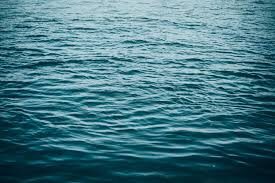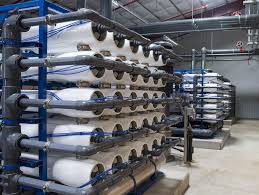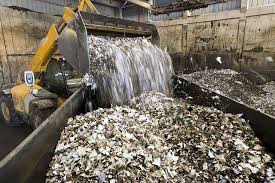Biological and Ecological Characteristics of Polluted Waters
Polluted water usually differs from pure water and exhibits different biological and ecological characteristics. Some natural constituents and chemistry of water can change with the introduction of pollutants or contaminants.
Polluted waters exhibit characteristics not usually associated with clean water such as eutrophication, high nutrient contents, low dissolved oxygen, and high biological oxygen demand among others.
The characteristics influence water quality and produce different biological and ecological characteristics.
Characteristics of Polluted Water
Pollution can cause several changes in water quality such as:
1. Eutrophication
Eutrophication is defined as an increase in the rate of supply of organic matter into an ecosystem (Nixon, 1995). It is also the process by which a body of water acquires a high concentration of nutrients, especially phosphates and nitrates which promote excessive algal growth.
The algae die, decompose and high levels of decomposing organic matter deplete the water of available oxygen killing other organisms.
It is a natural slow aging process for a water body (Art, 1993). Eutrophication is promoted by anthropogenic wastes and the nitrification of groundwater. Surface and groundwater can equally be affected by nutrient enrichment through percolation.
Eutrophication causes:
- Excessive algal bloom and fish death, increased abundance of cyanobacteria.
- Changes in aquatic fauna e.g. disappearance of species with high oxygen requirements compromise the biodiversity of the aquatic communities (Boatman et al, 1999).
- Bad taste and odor occur due to water enrichment
- Toxin production by algae (e.g. Cyanobacteria), infilling or clogging of canals with aquatic weeds, loss of recreational use due to slime, weed infestation, and loss of targeted species.
- High nitrate in water causes the blue baby syndrome.
2. Acidification
Acidification of water is caused by air pollution, mine drainage, industrial effluents, and atmospheric emissions of sulfur and nitrogen oxides. Surface waters have a pH of 6-8.5. Fish, shellfish, and aquatic insects have different tolerance levels to acidic waters.
Species diversity decreases with acidification and young organisms are more sensitive. Effects of acidity include:
- Mobilisation of metals that can cause toxicity, e.g. aluminum.
- Affected animals can suffer toxicity, stress, impaired feeding, and reduced survival. (Mohan and Kumar, 1998). Industrial effluents alter the chemistry of receiving waters and make them more susceptible to acidicication.
Read Also: Best Methods of Improving Drinking Water Quality
3. Salinisation
Agriculture, urbanization, and industrial activities can cause salinization. Toxic conditions occur when the composition and of receiving waters are out of range of physiological tolerance of organisms.
Effects of salinity include:
- Increased salinity encourages halo-tolerant species.
- Saline toxicity occurs with high levels of ions though some effluents contain low levels of ions creating de-ionized conditions.
4. Trace metals and mercury
Trace metals and mercury result from agriculture, urbanization, impoundments, mining, and industrial effluents. Effects mainly are due to long-range transport:
- They are harmful e.g. reduced growth rates, and direct toxicity.
- Can magnify and accumulate along food chains (biomagnification).

5. Pesticides and oil spills
Pesticides form by-products some of which are toxic. Non-metallic toxins e.g. dioxins, furans, and polycyclic aromatic hydrocarbons are formed mostly through the incineration of wastes.
The effects of pesticides are diverse (DEFRA, 2004). Oil spills cause hydrocarbon contamination. Long-range transport of pollutant also cause water degradation.
6. Sedimentation
This occurs in agriculture, forestry, urbanization, mining, and some industrial activities.
Effects of sedimentation include:
- High turbidity decreases the amount of sunlight and production of algae, plants, and macrophytes. Turbid waters irritate, scour gills, or reduce the success of visual predators.
- Fish habitat degradation e.g. filling of spawning gravel beds restricts oxygen from buried eggs.
- Very fine sediments (<63µm) are chemically active. Many toxic organic contaminants e.g. pesticides or their by-products are strongly associated with silt, clay, and organic carbon.
- High sediment loads in water increase thermal pollution by increasing the absorption of light; impair navigation and water retention facilities by silting (Owens, 2005).
7. Temperature
Aquatic organisms have a narrow range of temperature tolerance. Water bodies can buffer against atmospheric temperature extremes.
Thermal pollution is a direct impact e.g. the discharge of industrial cooling water into the aquatic environment, removal of vegetation on the riverbanks, or creation of impoundments on the water bodies. Heated waters scour habitats and change the characteristics of receiving water bodies.
Temperature affects physical, chemical, and biological processes. Temperature changes can eliminate species adapted to the natural fluctuations of water temperature in free-flowing streams.
Temperature increases also affect the levels of dissolved oxygen in the water column (Canon and Rajaram, 2001).
8. Dissolved oxygen and Biological oxygen demand
Dissolved oxygen is needed for the aerobic activities of organisms and influences chemical reactions.
High concentrations of oxygen indicate good water quality. The amount of dissolved oxygen in water is inversely proportional to the temperature and salinity of the water.
High algal blooms in surface water can deplete DO leading to death and decomposition of organisms which cause further oxygen depletion.
Biological oxygen demand refers to microbial consumption of oxygen. BOD increases with water temperature. High water temperature increases growth rates and species abundance forming algal blooms (Lackly and McArthur, 2000).
9. PH and Alkalinity
The pH of an aquatic system is closely linked to biological productivity. a pH of 6.5-8.5 usually indicates good water quality. Rainwater is slightly acidic because of the carbon dioxide dissolved in it.
The H+ ions entering a river basin in rainwater are neutralized by carbonate and silicate minerals as water percolates through soils. This neutralization determines whether or not acid precipitation will cause water quality impacts in receiving water bodies.
Where rocks have low buffering abilities e.g. hard igneous rocks, the water will be acidic. Areas downstream of peat bogs and wetlands produce acidic black waters with very little hardness, mineral content, and low biological productivity.
10. Turbidity and suspended solids
The greater the suspended solids in water, the higher the turbidity. The major source of turbidity in open water is phytoplankton growth, but closer to shores, particulates – clays, silts, re-suspended bottom sediments, and organic detritus dominate.
Suspended solids result from sediments carried by water. These sediments arise from activities like erosion and runoff, industrial effluents, and phytoplankton blooms.
High water transparency values indicate good water quality. Waste discharges can contribute ions to receiving water bodies or contain poor conductors (organic compounds) which change the the conductivity of receiving waters
11. Major ions and nutrients
Human activities alter the discharge regimes, transport of particulate matter, the chemical composition of surface runoff, and atmospheric deposition of solutes through wet and dry deposition. The ionic composition of surface water is relatively stable and insensitive to biological processes within a water body.
Magnesium, sodium, and potassium concentrations are not greatly influenced by the metabolic activities of aquatic organisms but calcium ion shows marked seasonal and spatial changes due to biological activity. Sulphate and inorganic carbon (carbonate and bicarbonate) are influenced by the production and respiration cycles of living organisms.
High nutrient levels kill some aquatic organisms and encourage rapid algal growth thereby reducing the oxygen level of the water. Some algae produce toxins. Clearwater increases photosynthesis. Reservoirs with a high level of organic pollution provide an ideal habitat for the breeding of mosquitoes.
14. Polychlorinated biphenyls (PCBs) and polycyclic aromatic hydrocarbons (PAHs)
The polychlorinated biphenyls have a low solubility in water. Their concentrations in sediments are highest in contaminated estuaries and lower in coastal waters.
They are mostly concentrated in top predators with high-fat deposits where the compounds accumulate. High PCBs cause infertility and disruption of endocrine activities.
Polychlorinated aromatic hydrocarbons are of concern for two reasons: The smaller and more water-soluble PAHs are toxic to animals while some of the larger ones are carcinogenic to both fish and man. They may affect reproduction in humans and fish. PAHs like PCBs do not have a high water solubility and tend to settle in sediments. Direct toxicities of PAHs increase with ultra violet radiation.



